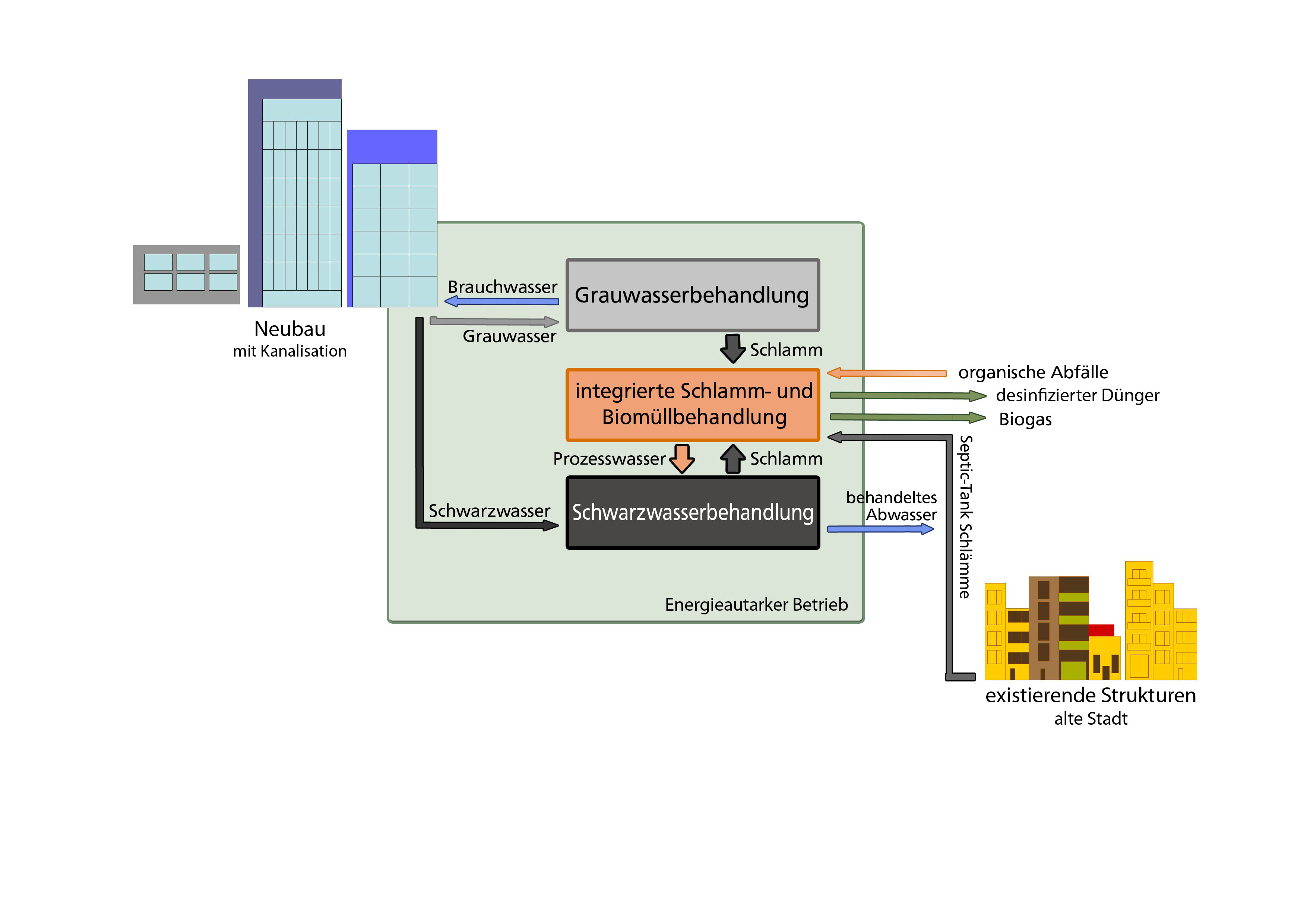Main Content
Project Vietnam
Project Vietnam
Vietnam is experiencing rapid urbanization with urban growth rates of more than 5 % ( 2005).
The wastewater situation is characterized by a lack of treatment plants. Only about 40 % of Vietnam’s urban population is connected to a sewerage system. Thus, wastewater is mostly discharged without any treatment, leading to serious environmental degradation. Prevalent means of sanitation are septic tanks installed under the buildings. Here, blackwater is collected, however, overflowing liquids drain uncontrolled into the underground. Greywater generally is drained into open storm water sewers along the streets without treatment.
One the one hand, the rapid, intensive, and partly uncontrolled growth of the city complicates the anticipatory provision of central infrastructures. On the other hand, subsequent installation of large-scale infrastructure is not recommendable, due to the dense fabric of the old town. Therefore, in Hanoi flexible infrastructure systems are required, that can easily adapt to rapidly changing situations.
In contrast to existing plans for upgrading Hanoi's infrastructure with conventional centralized sewerage systems, the semicentralized approach focuses on supply and treatment structures on the neighborhood level. Here, closed cycles combine the treatment of septic tank sludge, waste water and biowaste for biogas production. The concept includes the organization of septic tank draining as well as transport routes for the vacuum trucks from the tanks to the projected supply and treatment center.
Based on the research data, an operation scheme for the integrated supply and treatment system will be developed, defining scopes of responsibility for private and public actors.






